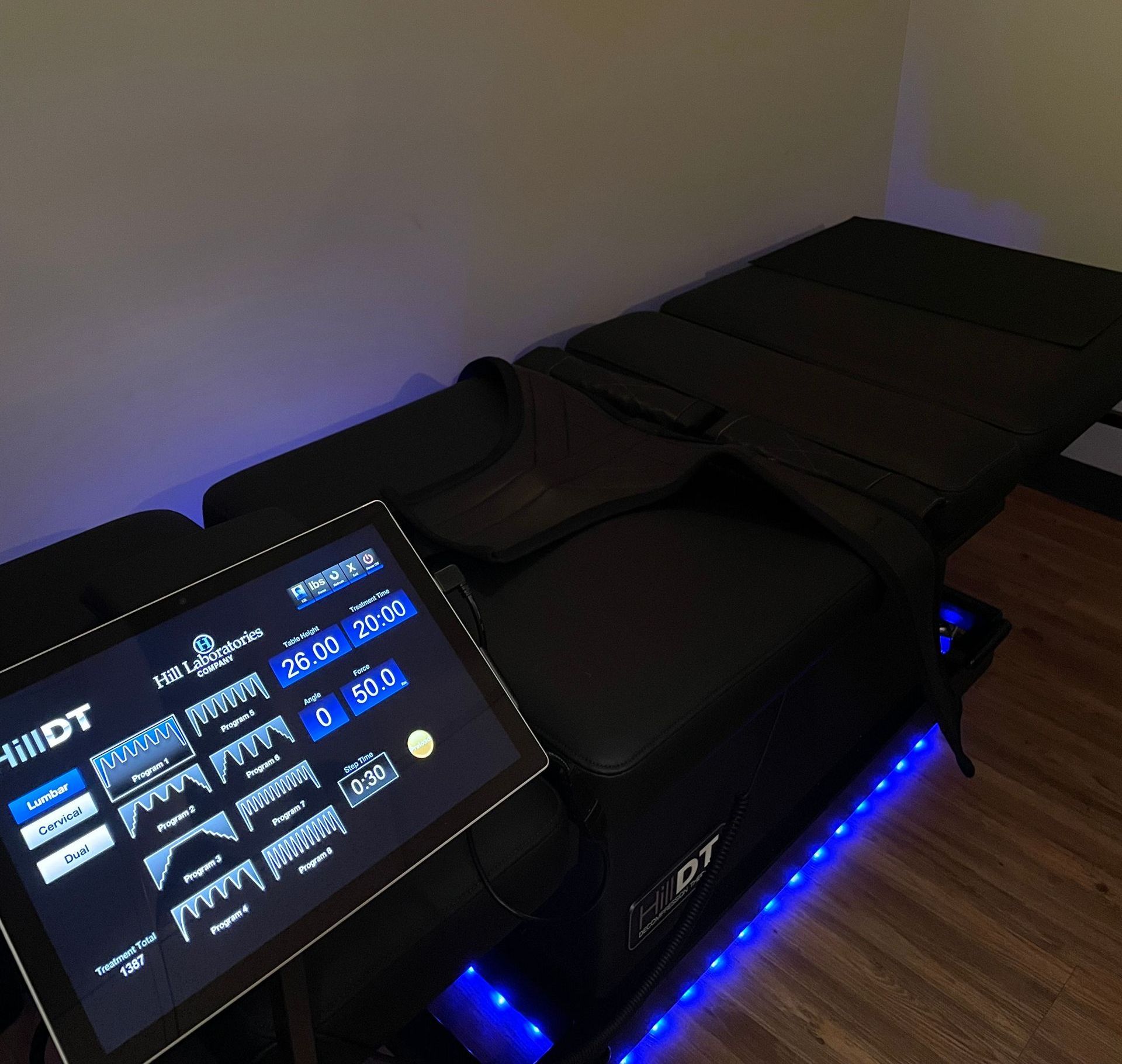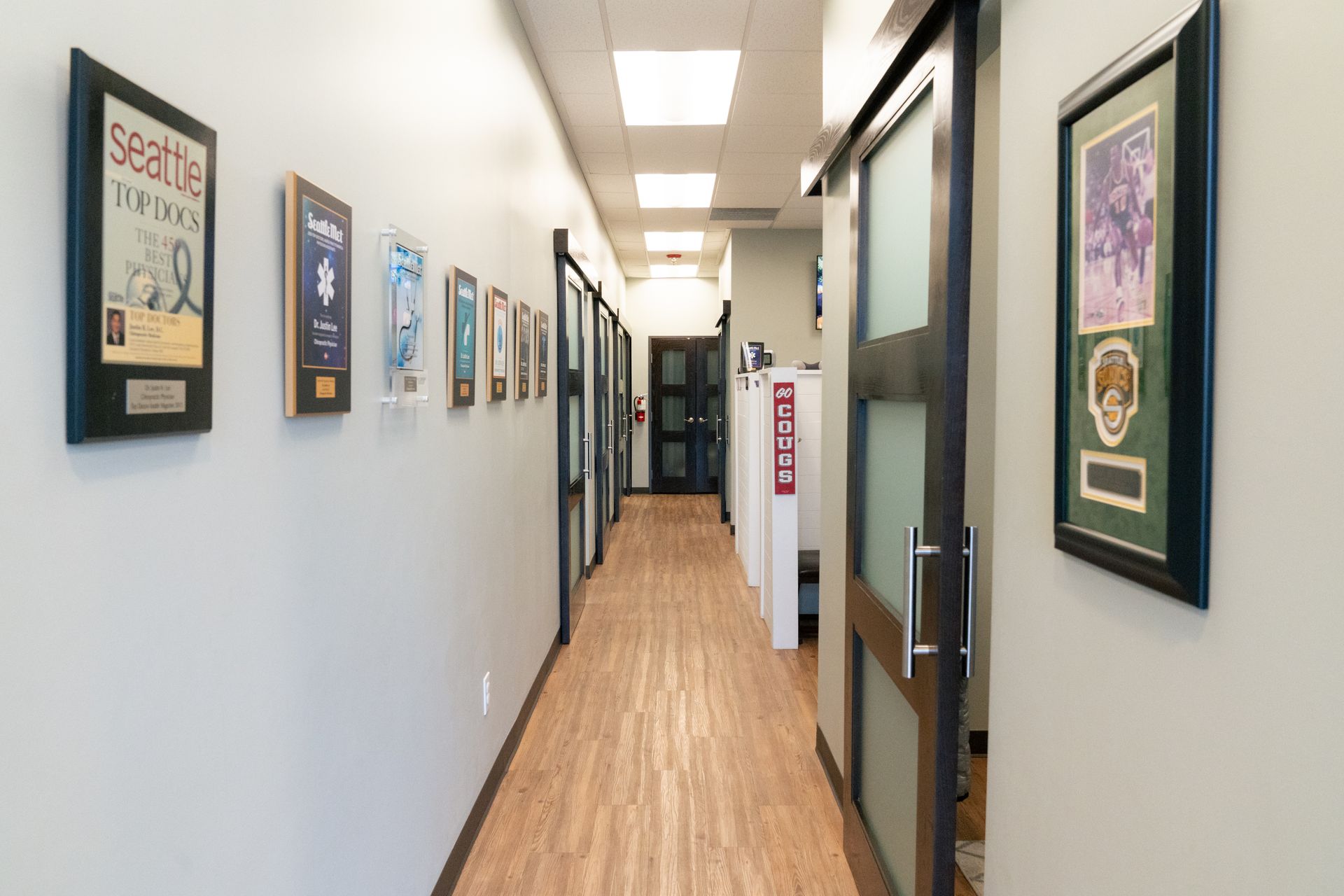Corrective Exercise
Exercise Rehabilitation at mySpine
What is corrective exercise?
Corrective exercise is the process of identifying biomechanical dysfunctions and developing a plan of action to improve functional movement quality and injury resistance. It is effective in the injury recovery process and for otherwise healthy individuals looking to improve their overall biomechanics to prevent future injury. Corrective exercise specialists use postural and functional movement assessments to identify dysfunctions caused by muscular or joint impairments. In this entry I’ll touch on two common contributors of movement impairment, the corrective exercise process, and my approach to both exercise rehabilitation and patient care at mySpine.
Muscle Imbalance and Compensation
Muscle imbalances can be explained by length tension relationships. These have to do with the resting length of a muscle and the force it can produce from its resting length. When there is an alteration of muscle lengths around a joint we can consider it an imbalance. Muscle imbalances are most visibly seen when testing strength unilaterally or when performing a compound movement like a squat. These imbalances reduce movement efficiency and force production. When ignored, muscular imbalances worsen over time and can increase your susceptibility to future injury or pain. It is important to take a proactive approach and address potential imbalances, which is the idea behind injury prevention. Corrective exercise specialists spot these imbalances and work with you to improve them.
Imbalances can lead to compensatory patterns which can lead to observable movement impairments. Muscular compensation is also a common post-injury symptom that can affect your balance, biomechanics, and overall muscle function. In response to an injury, your body works to support and relieve the compromised zones by placing more responsibility on neighboring muscles and joints to pick up the slack. In other words, when a muscle is unable to move a joint through a range of motion, your body seeks to hire other, already employed, muscles. However well intentioned our bodies response may be, compensation leads to a number of complications. It taxes the body, places excess strain on other muscles and joints, and can lead to future imbalances and injury. Compensations can be easy to spot or may be very well disguised by the body, leading to more serious problems down the road. Both muscle imbalances and compensation can be frustrating and tricky to navigate, though they are common and treatable. Corrective exercise is effective in addressing and minimizing both.
The Corrective Exercise Process
The corrective exercise process aims to improve biomechanics by identifying weak or overactive muscles and joints and restoring their optimal function through inhibitory techniques, stretching, and both isolated and integrated strengthening exercises. Corrective exercise specialists assess your posture, mobility, and overall movement patterns to determine a specific exercise program aimed at enhancing your movement quality and/or reducing pain.
MyApproach
At mySpine, we are committed to helping our patients regain strength, mobility, and confidence in their bodies. As a team, our doctor provides objective findings and diagnoses and I use this to inform a plan of action. Depending on the case, I take patients through a variety of specific movement and postural screenings to assess how their pain or injury is affecting their body as a whole. By taking both a local and global approach, we are able to identify underlying causes and contributors to the injury. An in depth assessment paired with patient feedback helps to identify sources of pain, imbalances, and compensations. The team I mentioned always includes our patients, and they are the star players.
Our goal is to reduce or eliminate pain with therapeutic exercises, improve lost or limited mobility, and improve strength. Throughout this process, I prioritize the feedback and experience of our patients ensuring they are comfortable and confident performing each exercise. Beyond exercise, I believe in patient education. Teaching them about their body mechanics, posture, and lifestyle modifications, and giving them the tools to help themselves beyond their time in our clinic. Injury rehabilitation or preventative care rely heavily on you to perform the exercises on your own. At mySpine, we encourage, support, and drive our patients to engage in self-care with our specialized Home Exercise Plans in addition to their in-house programs.
As always, be proactive, and remember that Corrective Exercise is for everyone!








